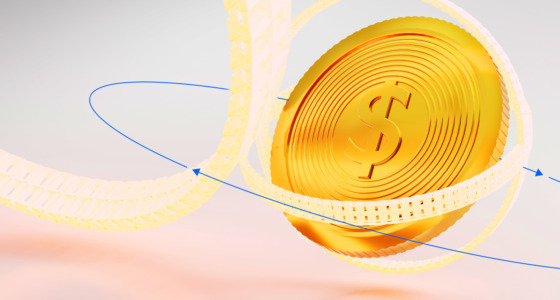

In 2008, traders prompted a monkey to build an investment portfolio. Stock symbols were written on dice and the monkey was offered a choice. There was a little hint from the pros – there were exactly 8 dice, in accordance with the unwritten risk distribution law (a single asset can take up to 15% in a portfolio). The “monkey portfolio” turned out to be an order of magnitude more successful than that of the experts who were making their forecasts at the same time. The monkey’s portfolio grew 7.5 times, experts’ – 5.1 times.
A swing is a major momentum trend that can be caught and used. It’s not a strategy, but a trading style, especially relevant in moments of market chaos, a behavior model for a trader or investor when determining a market entry point. The main advantage of this approach is the increased profit/risk ratio.
Author of swing trading theory
Market speculators owe the emergence of swing trading to J. Taylor. His 1950s book The Taylor Trading Technique provides examples of this trading style and lists its main risks. Swing trading refers to using the price swing (range) of the dominant trend. However, a profitable position can be held for several days, and the risks, on the contrary, are cut off quickly. Any trend consists of a phase of movements in a certain direction and a corrective phase. The swing trader tries to enter a position in the direction of the trend after its correction right when the momentum phase of the trend begins
Principles and rules of swing trading

Swing trading strategies are seemingly simple. This method of trading at rollback (correction) moments that occur during trend formation is rather complicated when compared with the ususal principle of working with trends. Its key feature is the use of day/week timeframes and strict compliance with risk management. A swing involves mastering a set of strategies and tools in order to enter a trend at the time of a rollback and make a profit with the least risk.
Here are the swing trading rules formulated by traders:
- The main entry point signal is a profitable movement right after a transaction is opened. If it goes in the opposite direction, close the position immediately, even if it incurs a loss – it’s better to cut a minimal loss than to waste time and money.
- A quick price jump and an immediate profit. Swing trading implies speed. A quick and small profit in swing trading is the basis for a new short-term trade. The large number of profitable transactions is what brings in profits.
- Stop loss and take profit are immediately set for any transaction. This will allow you not to miss the moment, especially since swingers often open several positions at the same time and switch between assets.
- Only profitable trades are carried over to the next trading day. Unprofitable positions are closed as quickly as possible.
- Considering all the market chaos, it is not worth working prior to fundamental news or trading session close. Work on a calm market, where swings are a real reflection of the market situation, and not a consequence of fluctuations in the information background.
- Swing trading does not imply resistance to a trend or waiting for a losing position to go in the black. Don’t average out your transactions, calculate profit/loss for a specific transaction without a set of measures – enter when there’s a clear signal and exit at once if the situation changes.
To work with swing trade in stocks, you need to clearly understand where the market will go in the short and medium term. If the situation is too unstable, don’t use this practice. For the same reasons, the main instruments of swing speculation are major currency pairs without exotics.

Features of stock trading using moving averages
The key to swing trading tactics is determining the entry point in time. You can use a candlestick chart to begin with. Proven three-candlestick patterns showing the moment of a trend reversal:
- Bottom up – the bottom of the Japanese candle is lower than the previous one’s bottom, and the candle following it has a higher bottom. A position is opened if the closing price of the last candle is higher than the top of the previous one.
- Top to bottom – the top of the candle is higher than the top of the previous one, the candle following it has a lower top. A position is opened if the closing price of the last candle is lower than the bottom of the previous one.
In reality, things are more complicated than these swing trading basics. A trader will have to master a fairly large set of tools – the undeservedly forgotten classic wave analysis to control the cyclical market movements, which can be used to predict a future reversal, and support and resistance level charts. In this case, bounces from specific price levels are taken into account.
You can also increase your productivity by:
- gaining an understanding of reversal chart patterns and the ability to identify them;
- operating with volumes, including futures;
- knowing the features of a 200-period MA formation as an indicator of a long-term trend and junior MA for the short and medium term;
- multi-timeframe analysis and three-screen method.
Recommendations for risk management in swing speculation are similar to the classic recommendations – allowing a maximum of 2% of the capital per loss on one transaction and maintaining a profit-to-loss ratio in the 2:1 range. In this case, swing trading can potentially be used with a positive result.








